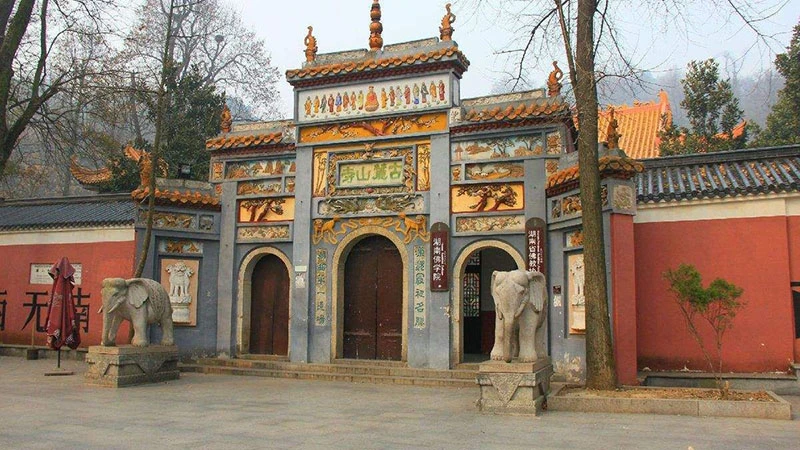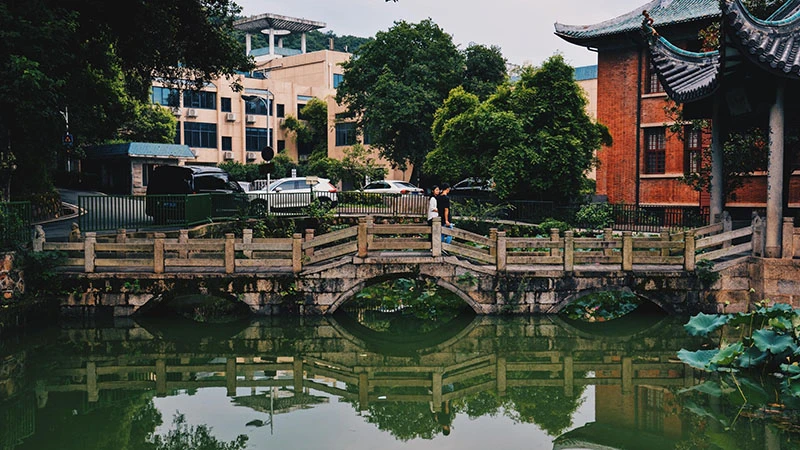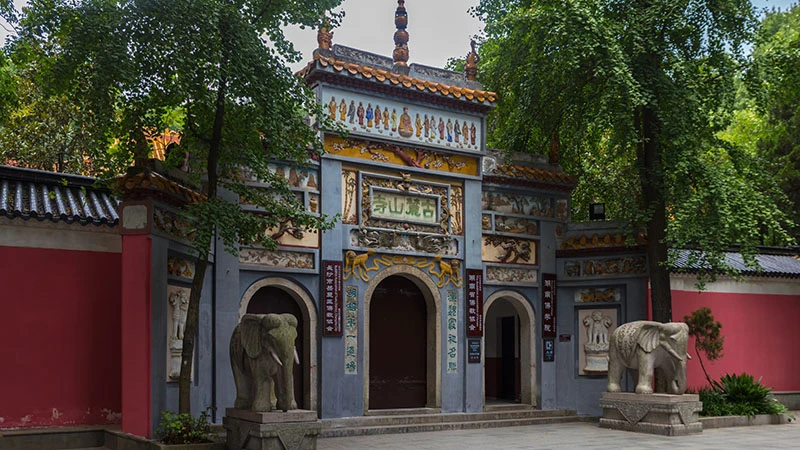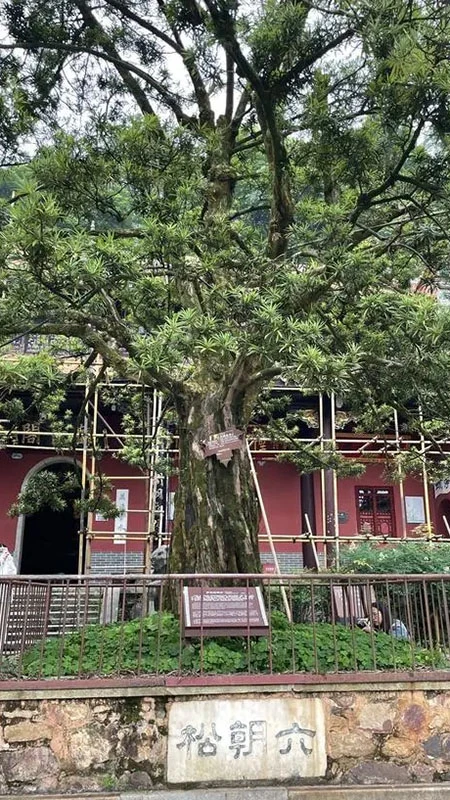A Historical Giant in the Heart of Changsha
In the shadow of the majestic Yuelu Mountain (岳麓山), nestled near the iconic Lushan Temple (麓山寺) in Changsha, stands a remarkable living relic—an ancient Luohan pine (罗汉松) tree, famously known as the "Six Dynasties Pine." This grand tree is not only a symbol of natural beauty but also a testament to history, believed to have been planted during the Six Dynasties period (circa 4th century). With an estimated age of over 1,740 years, the Six Dynasties Pine is the oldest tree within Changsha’s urban area, standing as a timeless guardian of the temple grounds.
While the Lushan Temple is currently undergoing renovations and closed to the public, I had the rare opportunity to visit the sacred site and witness this ancient tree up close. Guided by local staff, I stood before the tree, marveling at its sheer size and grandeur. Its crown spreads across an impressive 100 square meters, and despite centuries of exposure to the elements, the tree’s leaves remain vibrant and green.

The Mystique of Luohan Pines and “Pine Gate”
Lushan Temple, founded during the Western Jin Dynasty in 268 AD, holds the distinction of being Changsha’s oldest Buddhist temple. The temple’s Guanyin Pavilion (观音阁) is flanked by two towering Luohan pines, both of which are male and said to have been planted during the temple's establishment. The intertwined branches of the two trees form what is poetically referred to as the “Pine Gate,” a natural archway that has welcomed pilgrims for generations.
Legend has it that when the temple was first constructed, two wooden statues of Luohan (disciples of Buddha) were placed at the temple’s entrance to guard it. Over time, these statues supposedly sprouted branches and leaves, transforming into the two ancient Luohan pines that still stand today. This enchanting story adds an aura of mystery to the trees, elevating their spiritual significance in the minds of locals and visitors alike.
Among the pair, the Six Dynasties Pine, located on the northern side of the pavilion, is the more famous of the two. It has inspired poetry, with the renowned Tang dynasty poet Du Fu referencing it in his poem "The Two Temples of Yuelu Mountain (岳麓山道林二寺行)," where he writes about the pine’s serene and majestic presence. This poetic connection further cements the tree’s place in both the natural and cultural heritage of the region.
Guardianship of an Ancient Treasure
Standing next to the tree, I was struck by its enduring strength. The tree trunk, weathered by time, resembles a tightly coiled rope, testament to the powerful forces that have shaped it over the centuries. Compared to the younger Luohan pines planted nearby, the sheer size of the Six Dynasties Pine is awe-inspiring. Its thickest branches dwarf the trunks of the younger trees, symbolizing the endurance and resilience that has allowed it to thrive for almost two millennia.
Preserving such an ancient tree requires diligent care and attention. “The older a tree becomes, the more attention it needs,” explains Li Ping, the deputy director of the Yuelu Mountain Scenic Area’s gardening department. The Six Dynasties Pine is regularly monitored through a network of underground observation wells, allowing staff to keep a close watch on the health of its roots. Every year, around 50,000 yuan is spent on maintaining the tree, and if any significant issues such as pest infestations or root decay are detected, these costs can quickly multiply.
To ensure the longevity of the tree, special protective measures have been implemented. A barrier has been erected around the ancient pine to prevent visitors from inadvertently damaging it. Signs near the tree encourage people to appreciate it from a respectful distance, refraining from climbing over the fence or breaking off branches as souvenirs. These efforts underscore the importance of maintaining balance between public enjoyment and the tree’s well-being.



